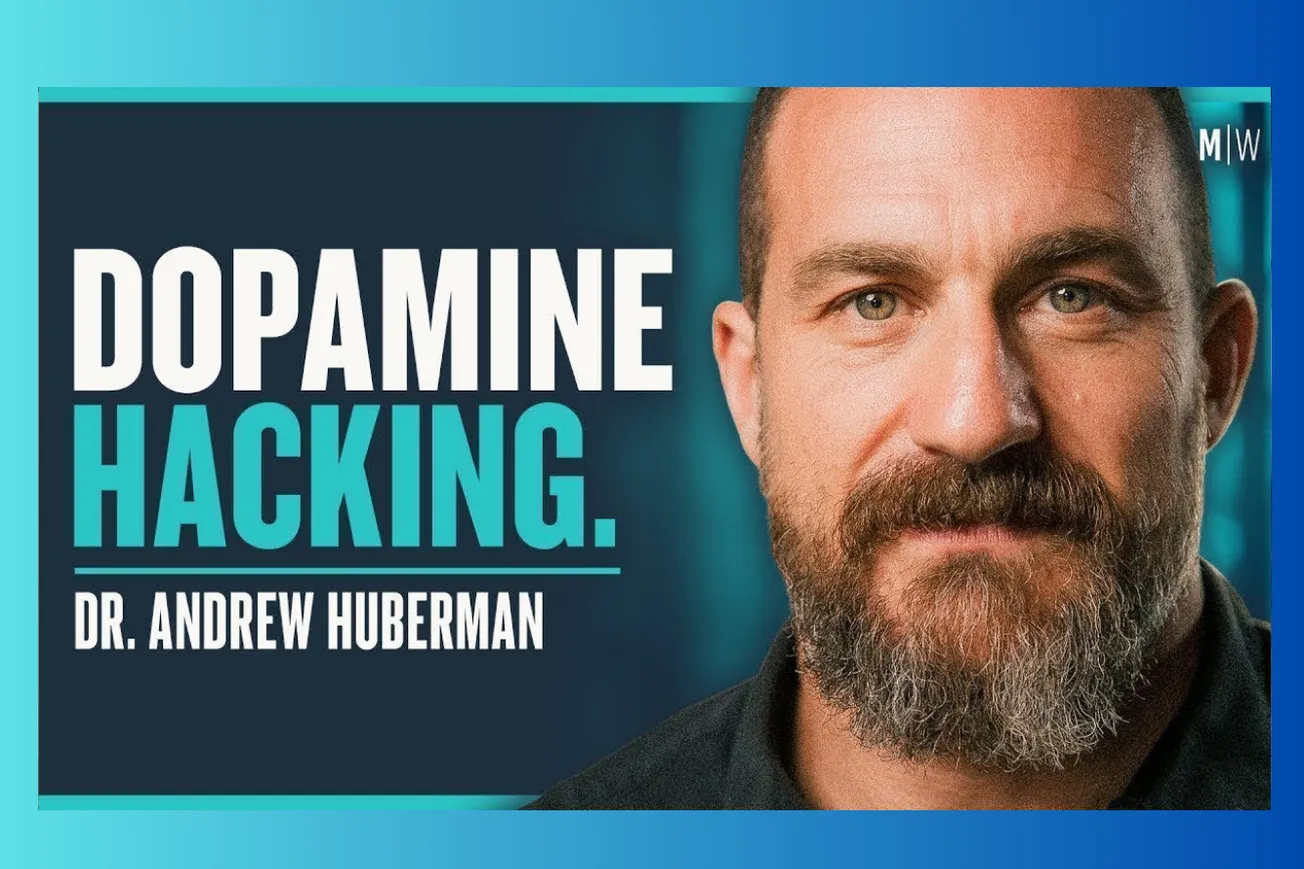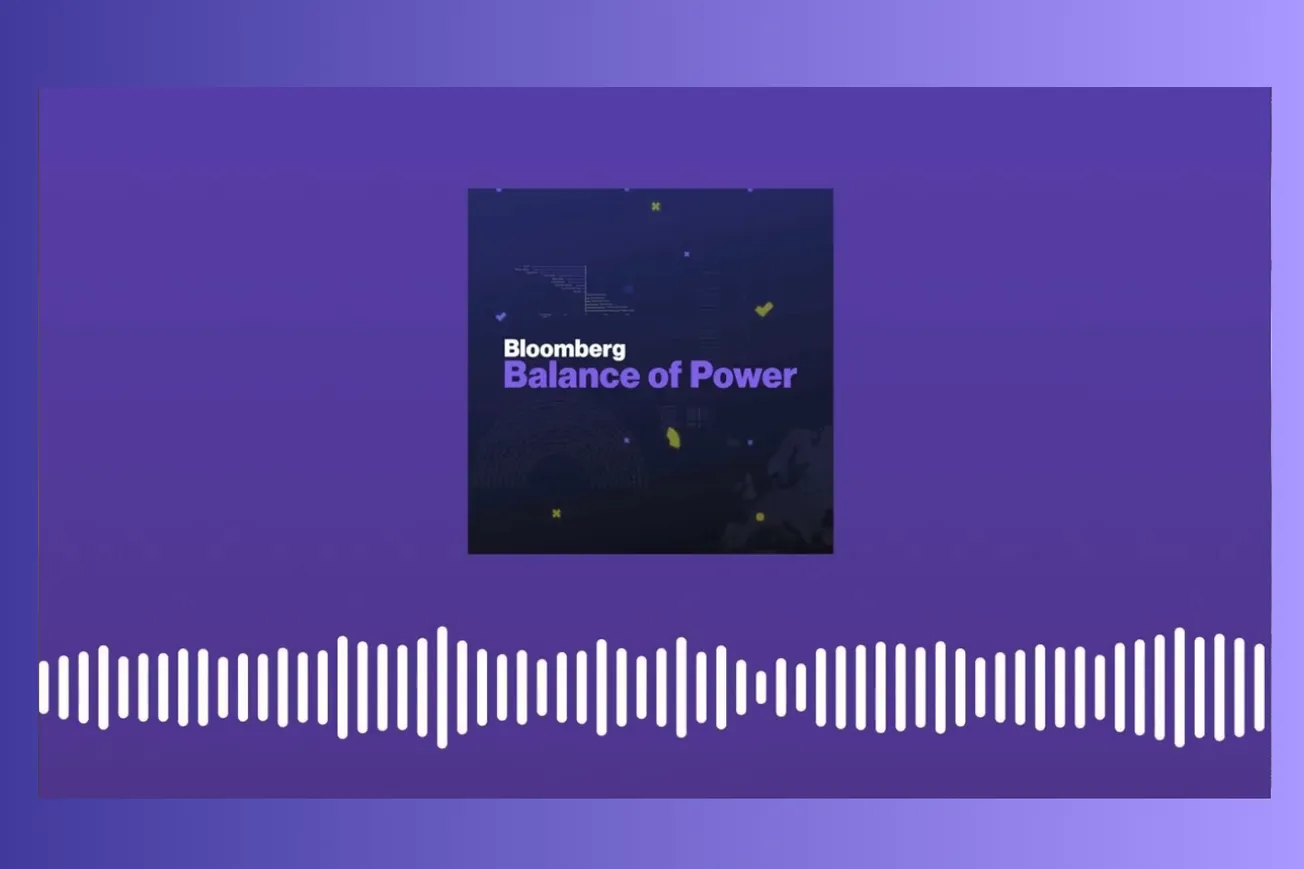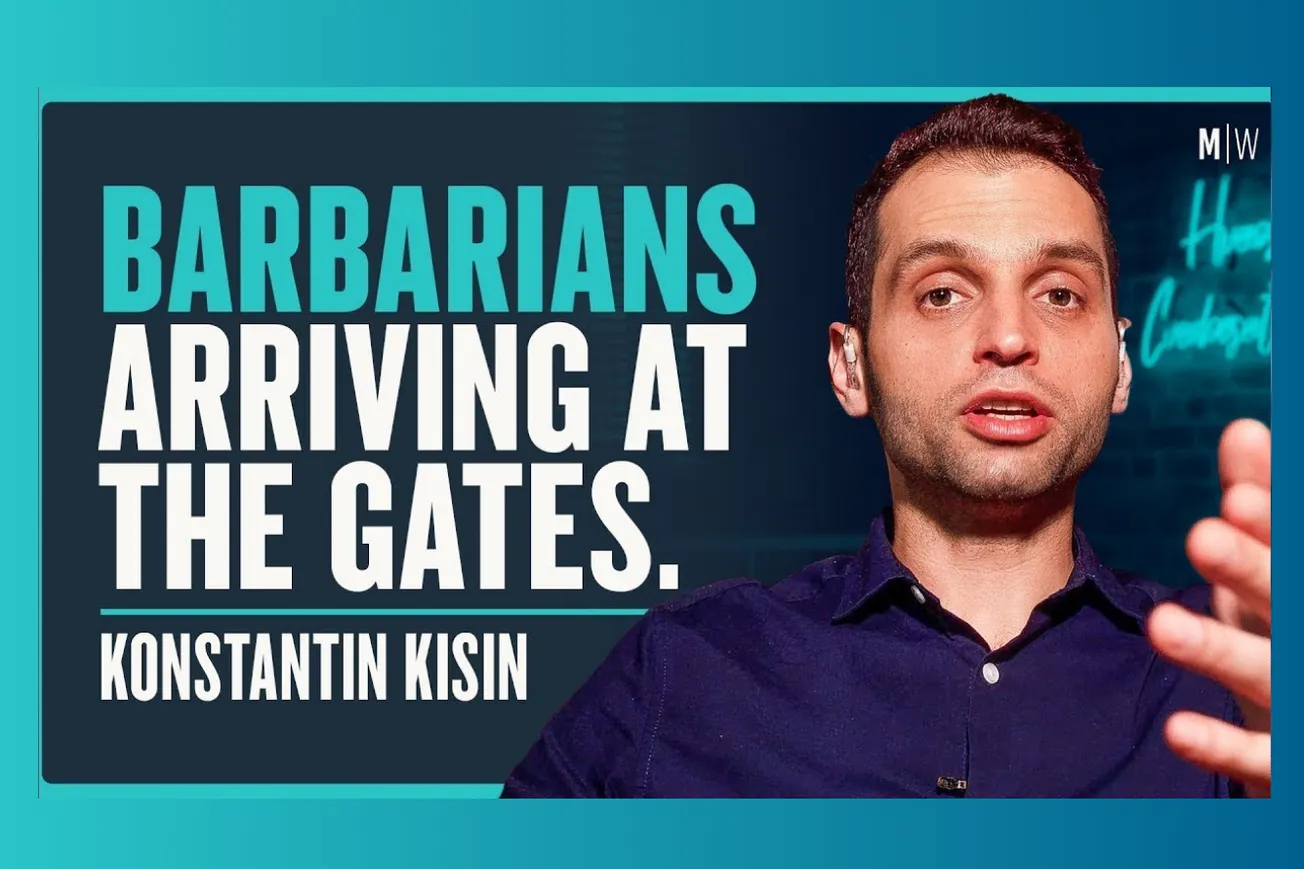Table of Contents
Neuroscientist Dr. Andrew Huberman reveals how to harness your nervous system for peak performance, emotional resilience, and life transformation through practical, science-based protocols that work every time.
Key Takeaways
- You cannot control the mind with the mind—use body-based interventions to shift mental states when stressed or overwhelmed
- Fear responses involve narrowed visual and cognitive focus, making it harder to access the very tools that would help you relax
- The autonomic nervous system governs alertness levels and can be deliberately shifted through breathing, cold exposure, and specific behaviors
- Heartbreak activates identical brain circuits to grief, creating a motivated seeking state that's impossible to fulfill until the space-time-closeness map is restructured
- Social media creates dopamine addiction patterns similar to gambling, transitioning from reward-seeking to compulsive behavior without satisfaction
- Morning routines should prioritize sunlight exposure, hydration with electrolytes, and delayed caffeine to optimize circadian rhythms and energy
- Cold exposure (11+ minutes weekly) and heat therapy (sauna protocols) create lasting biological adaptations for stress resilience and metabolism
- Declining testosterone levels due to environmental toxins like phthalates represent a serious public health concern requiring proactive measures
- Stress grows you when approached with the right mindset, but it's not the only pathway to growth and development
- Expectation effects can override genetic predispositions, making your beliefs about stress, aging, and health powerful determinants of actual outcomes
Timeline Overview
- 00:00–08:32 — Control the Mind with the Body: Why thinking your way out of stress fails and how the autonomic nervous system creates runaway mental states that require physical interventions
- 08:32–24:16 — Is There a Universal Fear?: Carbon dioxide sensitivity as humanity's most universal fear response, the physiology of panic, and how free divers accidentally die from CO2 tolerance training
- 24:16–29:24 — Studying Fear in David Goggins: How the ultra-endurance athlete seeks "liminal friction," uses stress inoculation protocols, and constantly tests himself against discomfort
- 29:24–49:47 — The Neuroscience of Heartbreak: Attachment styles from childhood, the space-time-closeness map that breaks during loss, and why social media prolongs grief recovery
- 49:47–01:00:31 — How Triggering Are Our Phones?: Dopamine patterns in social media use, intermittent reinforcement schedules, and why scrolling becomes compulsive behavior without satisfaction
- 01:00:31–01:12:22 — Effectiveness of Dopamine Detoxing: When dopamine detox works versus extreme versions, the importance of resetting reward thresholds, and sustainable approaches to digital wellness
- 01:12:22–01:21:40 — The Expectation Effect: How beliefs override genetics in performance studies, the placebo effect on metabolism and stress hormones, and why mindset shapes physiological reality
- 01:21:40–01:32:25 — Discussing Lex Fridman: The Wolverine-like persistence of working with love rather than anger, energy management strategies, and approaching challenges from genuine desire
- 01:32:25–01:51:41 — Andrew's Morning Routine: Sunlight exposure timing, the 90-minute delay for caffeine, cognitive challenges before distractions, and the importance of consistent meal windows
- 01:51:41–02:03:05 — Exposure to Cold & Heat: The Soberg principle for metabolism, growth hormone protocols requiring 2 hours of sauna, and specific temperature and timing recommendations
- 02:03:05–02:10:50 — Should We Be Worried About Decreasing Testosterone Levels?: Environmental phthalates reducing sperm counts, anogenital distance changes, and practical steps to minimize exposure
- 02:10:50–02:19:54 — Derek from More Plates More Dates: How internet educators normalized hormone discussions, optimal testosterone replacement protocols, and the importance of maintaining estrogen balance
- 02:19:54–02:30:21 — The Ability to Make Serious Life Changes: Fear as the primary motivator for major life shifts, the power of mentorship, and leveraging stress for better decision-making
- 02:30:21–02:36:55 — Why Andrew Hides His Tattoos: Teaching philosophy of making information the focus, generational attitudes toward body modification, and how facial tattoos affect perception
- 02:36:55–end — Where to Find Andrew: Huberman Lab podcast availability and the commitment to keeping all content freely accessible
The Fundamental Principle: Control Mind Through Body
"If you can't control the mind with the mind, look to the body to control the mind."
Dr. Andrew Huberman's most foundational insight challenges the common assumption that mental willpower alone can overcome difficult emotional states. When we're highly stressed, anxious, or upset, our thoughts become like a "runaway train" that's nearly impossible to stop through cognitive effort alone.
The autonomic nervous system—which governs our alertness levels—operates on a continuum from extremely alert and stressed to very calm and drowsy. At the extremes of this spectrum, our ability to think clearly becomes severely compromised. When stressed, we experience tunnel vision both literally and mentally, making it harder to access the very strategies that would help us calm down.
Elite Insight: "When we are at the extremes of the autonomic what I call seesaw of very very alert to the point of being really stressed or panicked... our thoughts become a bit like a runaway train. If you're very upset it's hard to talk yourself out of it."
The solution lies in recognizing that the autonomic nervous system connects brain and body through a two-way street. Certain behaviors—particularly breathing patterns, cold exposure, and physical movement—can shift where we sit on this autonomic continuum, thereby changing the types of thoughts we can entertain and actions we can take.
This isn't merely theoretical. When stressed, several predictable physiological changes occur: heart rate increases, glucose shuttles to large muscles, pupils dilate (narrowing visual field), and our cognitive aperture becomes extremely focused. This creates what Huberman calls the "fifth column of stress"—the very narrowing that makes it harder to do the things that would reduce stress.
The Neuroscience of Universal Fear
"The one that everybody who has a healthy nervous system will react quite robustly to is if you start increasing the amount of carbon dioxide that they're breathing and reduce the amount of oxygen."
While individual fears vary dramatically based on life experience, there exists one nearly universal trigger: elevated carbon dioxide levels. This fear response is so fundamental that a single breath of pure CO2 can reliably induce panic in virtually anyone.
The physiology reveals why this response is so powerful. We don't actually have neurons that monitor oxygen levels to stimulate breathing. Instead, specialized neurons in the brainstem detect rising CO2 concentrations and trigger the gasp reflex when thresholds are exceeded. This system evolved to prevent suffocation, making CO2 buildup an immediate survival threat.
Elite Insight: "It turns out that there are a little group of neurons in the brain stem that respond to levels of carbon dioxide in the blood... we don't have neurons that stimulate breathing for oxygen, we have neurons that sense when carbon dioxide levels get too high."
This mechanism explains both the power and danger of breath work practices. Free divers train CO2 tolerance to extend underwater time, but this adaptation can be fatal. When someone dies free diving, they don't panic from air hunger—they simply black out because their CO2 tolerance has exceeded their body's safety margins.
Understanding this universal fear response provides insights into anxiety management. Many anxiety disorders involve hypersensitivity to CO2 changes, which is why controlled breathing practices can be so effective for emotional regulation.
David Goggins and Liminal Friction
Huberman's study of David Goggins revealed a unique approach to building stress resilience through what he terms "liminal friction"—deliberately placing yourself at the intersection of competing physiological demands. This might mean exercising when exhausted or staying calm when highly aroused.
The neuroscience behind this approach involves training your tolerance for adrenaline in both brain and body. Since adrenaline is generic—there's no special adrenaline for car crashes versus relationship conflicts—building tolerance in controlled settings transfers to all stress situations.
Elite Insight: "What you're training and improving when you're getting better at dealing with stress is this ability to tolerate high amounts of adrenaline in your body and to think clearly and function well."
Goggins exemplifies this by constantly seeking new forms of friction. Even after achieving success, he continues challenging himself with activities like wilderness firefighting—not for external validation but to maintain his capacity for growth through adversity.
The key insight is that stress inoculation works through voluntary exposure. When you deliberately trigger adrenaline release through cold exposure, intense exercise, or challenging situations, you develop familiarity with these states. This familiarity provides options during genuine emergencies rather than defaulting to panic responses.
The Space-Time-Closeness Map of Attachment
"There are three sort of factors that are mapped in our consciousness and our subconscious and these are space, time, and this notion of closeness which is attachment... when someone dies it's very confusing for the brain because where are they in space?"
Huberman's analysis of heartbreak and grief reveals that these experiences activate identical brain circuits—specifically, the same motivational systems that drive hunger or sexual desire. Both heartbreak and grief involve the disruption of what he calls the "space-time-closeness map."
This internal map tracks three critical dimensions: where someone is in space, when you'll see them next, and how emotionally close you are to them. Death permanently breaks the space and time components while leaving closeness intact, creating an impossible motivational state.
Elite Insight: "Grief is a motivated state to bridge the distance in time and space and yet it's impossible... the process of grief is a gradual waning of that motivation and a gradual shift of the memory of the person into some concept."
Breakups create similar disruption because the person becomes unavailable in space and time while emotional attachment remains. This explains why constant social media checking prolongs recovery—it continuously renews the sense that the person is still accessible, preventing the necessary map restructuring.
The gender differences in breakup recovery that research reveals make sense through this lens. Women may experience more intense initial pain but recover more completely because they're generally more willing to feel the full emotional intensity. Men often suppress these feelings, using strategies like workaholism or anger, which prevents the necessary map rebuilding process.
The Dopamine Trap of Social Media
Social media platforms exploit dopamine systems through intermittent random rewards—the most powerful schedule for maintaining behavior. Initially, platforms provide genuine novelty and surprise, triggering substantial dopamine release. However, this quickly transitions to compulsive scrolling without satisfaction.
The shift occurs because algorithms incorporate intermittent reinforcement schedules. You scroll through mundane content until suddenly encountering something highly engaging—creating the same psychological pattern as gambling addiction.
Elite Insight: "If we were to look at ourselves through the lens of an experiment like we would an animal experiment we'd think that animal is sick... that's us right that's us I'm pointing at myself intentionally that's us."
The solution isn't complete avoidance but understanding the mechanics. Dopamine that arrives without effort destroys motivation and pleasure in other activities. The key is creating space between social media sessions, allowing dopamine baseline to reset and making the experience more rewarding when you return.
This principle applies beyond technology. Any high-dopamine activity pursued too frequently will lose its effectiveness and potentially interfere with finding pleasure in lower-stimulation activities like reading, conversation, or nature.
The Expectation Effect: Mind Over Genetics
"Your expectations are even more powerful than your genes."
Huberman highlights research showing that beliefs about stress, health, and aging can override genetic predispositions. In studies where people were told they had genetic advantages for performance, those without the beneficial genes actually performed better than people who had the genes but were told they didn't.
The mechanism involves what researchers call the "expectation effect"—a broader phenomenon than traditional placebo effects. When people believe certain outcomes will occur, their physiology often shifts to support those expectations.
Elite Insight: "Real plus perceived equals your reality... any event causes a real physiological response but that real physiological response is braided in with our expectation and our understanding of what the response ought to be."
This has profound implications for how we frame challenges. Dr. Alia Crum's research shows that believing stress grows you (the mindset held by Navy SEALs) creates different physiological responses than believing stress diminishes you. People with growth mindsets around stress actually perform better under pressure.
The practical application involves consciously examining your beliefs about aging, stress, health challenges, and personal capabilities. Since these beliefs directly influence physiological outcomes, updating limiting beliefs becomes a form of biological intervention.
Morning Optimization Protocols
"The single best thing you can do for your sleep, your energy, your mood, your wakefulness, your metabolism is to get natural light in your eyes early in the day."
Huberman's morning routine prioritizes circadian rhythm optimization through early light exposure, strategic caffeine timing, and cognitive challenges before distractions. The foundation involves getting sunlight in your eyes within the first three hours of waking—a practice that sets multiple biological cascades in motion.
The 90-120 minute delay before caffeine consumption allows adenosine clearance and prevents afternoon energy crashes. During this window, Huberman focuses on cognitively demanding tasks while avoiding email and social media, recognizing that early attention patterns influence the entire day.
Elite Insight: "I have this obsession with trying to do one cognitively hard thing a day one and one physically hard thing a day... if I don't [do the cognitive challenge early] the distraction that's created by social media and interactions with others can kind of wick out into the rest of the day."
The protocol includes hydration with electrolytes (specifically sea salt or Element), which supports the adrenal system that's naturally active in the morning hours. This combination of light, hydration, and cognitive challenge creates sustainable energy without relying solely on caffeine.
What makes this approach powerful is its foundation in circadian biology. The practices work because they align with existing physiological rhythms rather than fighting against them, creating compound benefits that improve with consistency.
Heat and Cold Therapy Protocols
"The threshold you're trying to hit each week is at least... 11 minutes of uncomfortable but safe cold exposure per week total."
Huberman outlines specific protocols for leveraging temperature extremes to optimize biology. For cold exposure, research shows that 11 minutes of weekly cold immersion (uncomfortable but safe) increases brown fat thermogenesis, metabolism, and stress resilience.
The key principle he calls the "Soberg principle" states that ending on cold (rather than warming up immediately) forces your body to generate heat naturally, amplifying metabolic benefits. This applies whether doing contrast therapy or cold exposure alone.
Elite Insight: "The biggest effects of sauna on growth hormone... are when the sauna is only done once per week but it's done in four cycles... of 30 minutes each... you see in these human studies up to 16 fold increases in growth hormone."
For heat therapy, the most dramatic growth hormone effects require extreme protocols: four 30-minute sauna sessions in one day (with brief cooling periods), performed only once weekly. This 2-hour total heat exposure can increase growth hormone by 1,600%, but only when done infrequently enough to remain a stressor.
The temperature ranges are specific: 60-70°F for cold exposure and 180-212°F for sauna. These protocols work because they're stressors that trigger adaptive responses, but they must be applied strategically to avoid adaptation that diminishes benefits.
Environmental Threats to Hormone Health
"If you look at sperm counts and testosterone levels in males in different areas of the United States they are significantly lower in areas where there's a lot of pesticide use."
Dr. Shanna Swan's research reveals that environmental phthalates—primarily from pesticides—are dramatically altering male reproductive development. Areas with heavy pesticide use show significantly lower testosterone and sperm counts, with effects beginning in utero when mothers are exposed.
The mechanism involves disruption of hormonal signaling during critical developmental windows. Phthalate exposure can alter anogenital distance (a marker of hormonal masculinization) and reduce the organizing effects of testosterone during fetal development.
Elite Insight: "In people that ingest phthalates during puberty and in the post puberty years it's conceivable that those phthalates could inhibit the activating effects of androgens not just... the organizing effects of androgens early in life."
Practical steps include minimizing handling of printed receipts (a concentrated BPA source), researching pesticide use on foods you consume regularly, and considering the timing of chemical exposures during critical periods like puberty.
The concern isn't alarmist—it's based on NIH-funded research showing measurable population-level changes in male reproductive health over decades. While individual risk varies, the scale of change suggests this represents a significant public health challenge requiring informed awareness.
Conclusion
Dr. Huberman's work demonstrates that understanding your nervous system provides unprecedented control over mental states, emotional responses, and physical performance. The key insight is that mind and body operate as an integrated system—attempting to optimize one while ignoring the other creates an unnecessary handicap. His protocols work because they leverage existing biological systems rather than fighting against them, creating sustainable improvements that compound over time. The science reveals that we have far more agency over our internal states than commonly believed, but only when we understand and work with our underlying physiology.
Practical Implications
• Use Body-Based Interventions During Stress: When overwhelmed or anxious, shift focus from thinking to breathing, movement, or cold exposure rather than trying to rationalize your way out of difficult states
• Prioritize Morning Light Exposure: Get natural sunlight in your eyes within 3 hours of waking for 10-30 minutes to optimize circadian rhythms, sleep quality, and daytime energy
• Delay Caffeine 90-120 Minutes: Allow natural adenosine clearance before consuming caffeine to prevent afternoon crashes and improve sleep quality
• Implement Strategic Cold Exposure: Aim for 11+ minutes of uncomfortable but safe cold exposure weekly, ending sessions on cold to maximize metabolic benefits
• Practice Stress Inoculation: Deliberately expose yourself to controlled stressors (cold, intense exercise, challenging situations) to build resilience for real-world pressures
• Limit Social Media to Prevent Dopamine Dysfunction: Take regular breaks from high-stimulation digital content to reset reward thresholds and maintain pleasure in lower-intensity activities
• Address Environmental Toxin Exposure: Minimize handling of printed receipts, research pesticide use on foods, and be conscious of chemical exposures during critical developmental periods
• Reframe Stress as Growth: Adopt the mindset that stress enhances performance and builds resilience rather than viewing it as purely destructive
• Use Temperature Contrast Strategically: Apply sauna and cold protocols based on specific goals (recovery, metabolism, growth hormone) rather than random usage
• Structure Recovery Periods: Balance intense work or training with deliberate decompression using yoga nidra, walks in nature, or other parasympathetic activities





